Is it possible to eat rice with gastritis: arguments for and against, choice of variety, suitable recipes
When doctors prescribe dietary restrictions to patients diagnosed with gastritis, they have questions about whether this or that product can now be consumed. A careful study of the composition will help you decide how to follow the recommendations, but at the same time eat tasty and varied food. benefits and harm to the product and methods of its preparation.
More than 10 thousand different dishes are prepared from rice. It’s difficult to find a housewife who doesn’t have a couple of bags of her favorite cereal in her kitchen. It’s worth figuring out whether you can eat rice if you have gastritis or whether you’ll have to put off the prepared cereal until better times.
Eating rice for gastritis
Before introducing or excluding rice dishes from your diet if you are diagnosed with gastritis, let’s study the chemical composition of this cereal and nutritional indicators.
Chemical composition
Rice contains the following vitamins and minerals:
- B vitamins (thiamine, pyridoxine, folates, pantothenates) – regulate the body’s metabolism, regeneration processes, hematopoietic processes;
- vitamin E – the vitamin of youth, prevents free radical cell destruction;
- vitamin H – regulates the metabolism of fats and carbohydrates, as well as the processes of cell division;
- vitamin PP – participates in the synthesis of enzymes that regulate carbohydrate and lipid metabolism;
- choline is a precursor of the neurotropic substance acetylcholine, which regulates the functions of the nervous system;
- macroelements potassium, calcium, magnesium, sodium - regulate the activity of muscle, nerve and secretory cells;
- trace elements iron, cobalt, manganese, copper, zinc are structural components of a number of enzymes.
A serving of 100 g of rice (raw cereal) replenishes up to 15% of the body's daily needs for vitamins and minerals.
The nutritional value
Rice is a high-calorie product.
KBZHU per 100 g of dry cereal (polished type of cereal):
- calorie content – 360 kcal;
- proteins – 6.61 g (9% of daily intake);
- carbohydrates – 79.34 g (26% of the daily value), of which sugars – 0.9 g (2% of the daily value);
- fats – 0.58 g (1% daily value).
These indicators vary depending by rice variety, type of cereal and method of its preparation. The table shows values per 100 g of product.
| Type of rice | Calorie content, kcal | Proteins, g | Fats, g | Carbohydrates, G |
| Boiled polished | 130 | 2,38 | 0,21 | 28,59 |
| steamed (cereal) | 374 | 7,51 | 1,03 | 80,89 |
| Boiled steamed | 123 | 2,91 | 0,37 | 26,05 |
| brown (cereal) | 362 | 7,5 | 2,68 | 76,17 |
| Boiled brown | 112 | 2,32 | 0,83 | 23,51 |
| brown long grain (cereal) | 367 | 7,54 | 3,2 | 76,25 |
| boiled brown long grain | 123 | 2,74 | 0,97 | 25,58 |
| brown steamed (cereal) | 370 | 7,6 | 2,75 | 78,68 |
| boiled brown steamed | 147 | 3,09 | 0,85 | 31,33 |
| wild (groats) | 357 | 14,73 | 1,08 | 74,9 |
| boiled wild | 101 | 3,99 | 0,34 | 21,34 |
| long grain (cereal) | 365 | 7,13 | 0,66 | 79,95 |
| boiled long grain | 130 | 2,69 | 0,28 | 28,17 |
| sticky (cereal) | 370 | 6,81 | 0,55 | 81,68 |
| boiled sticky | 97 | 2,02 | 0,19 | 21,09 |
| round grain (cereal) | 358 | 6,5 | 0,52 | 79,15 |
| boiled round grain | 130 | 2,36 | 0,19 | 28,73 |
Patients with gastritis are first advised to pay attention to the protein and carbohydrate content.
The higher the protein content, the more gluten in rice that is beneficial for the gastric mucosa. But the increased carbohydrate content increases the acidity of the food content, which is contraindicated in gastritis with increased acidity.
Consumption of rice for various forms of gastritis
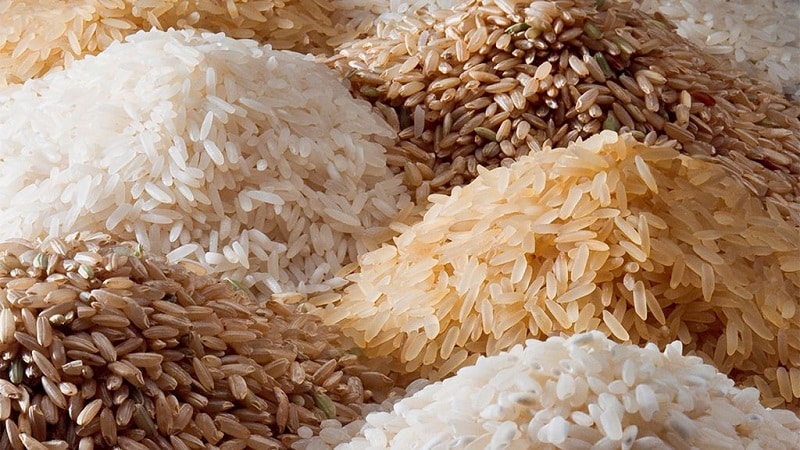
Gastroenterologists do not recommend consumption of rice to all patients diagnosed with gastritis. Such uncertainty arises due to differences in the processes occurring in the body in patients with different types and forms of the disease.
In acute form gastritis regulate the volume and reduce the frequency of food intake. If rice is introduced into the diet, it is served in small portions in the form of a liquid, watery gruel. In severe cases, only rice water is used.
In chronic form diseases, it is allowed to introduce milk rice porridges and multi-component dishes into the diet. The only rule is to maintain regularity in eating: small portions and often.
With high acidity
For reasons of occurrence, such gastritis is divided into:
- catarrhal – occurs when there is an excess of acidic foods in the diet;
- fibrous – manifests itself in severe infections or acid poisoning.
Patients with this diagnosis are advised to cook cooked rice varieties with lower carbohydrate content and higher gluten content. Brown, long-grain, sticky, round and wild varieties are suitable.
Low acidity
The causes of this type of disease:
- dystrophy of the stomach wall (catarrhal gastritis, which occurs during fasting, refusal of protein foods, autoimmune diseases);
- necrosis of stomach tissue (corrosive gastritis that occurs due to poisoning with hazardous substances);
- purulent inflammation of the stomach tissues (phlegmous gastritis, which occurs as a complication of peptic ulcer, cancer);
- infection with the bacterium Helicobacter pylori.
During remission, patients with these types of gastritis are prescribed a high-calorie carbohydrate diet that promotes rapid tissue regeneration. All types of rice in this case will be equally useful.
The benefits and harms of rice
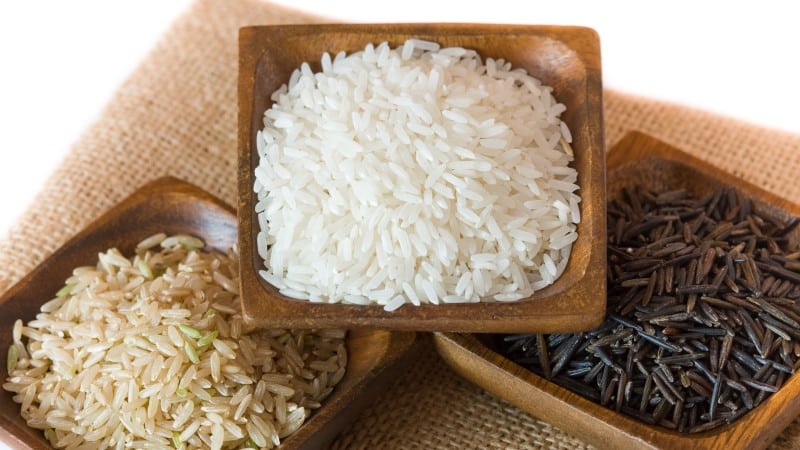
All varieties of rice, despite the difference in composition, have a number of beneficial properties that help patients with gastritis:
- vitamins and minerals included in the cereal help accelerate the regeneration of the gastric mucosa;
- Rice gluten envelops the walls of the stomach, protecting it from the traumatic effects of acid and other aggressive substances;
- fiber adsorbs toxins and removes harmful substances from the body;
- high nutritional value promotes satiety with small portions of food;
- The neutral taste of rice allows you to combine it with other products to diversify your diet.
Note. The listed facts do not claim that rice heals the stomach, but its consumption alleviates the condition of patients for whom this product was recommended by a gastroenterologist.
Despite all the benefits, eating rice for inflammatory processes of the stomach has a number of limitations and contraindications:
- rice is contraindicated for constipation, which may accompany gastritis;
- patients with gluten intolerance are forced to give up rice dishes;
- A high carbohydrate content increases acidity in the stomach, so for gastritis with high acidity, it is recommended not to consume all types of rice.
Rice consumption standards
The rate of rice consumption for patients with gastritis does not differ from the rate for a healthy person. The recommended amount is 1.5-2 cups of cereal per week, for rice cereal - 1 cup per week. When eating rice dishes every other day, the daily norm is 100 g.
How to cook rice for gastritis
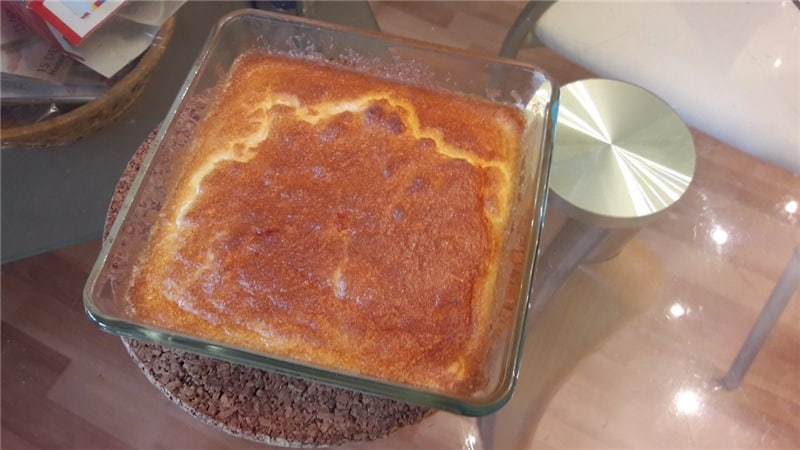
To prevent rice dishes from aggravating gastritis, follow these recommendations:
- Rinse the rice thoroughly under running water until the drained liquid becomes clear. This way you will get rid of excess carbohydrates, which increase the acidity of gastric juice, and increase the percentage of gluten.
- Before cooking, soak the cereal in warm water for 1-1.5 hours, this way you will wash out harmful substances from the cereal, which are used to treat cereals to increase shelf life;
- Porridge, useful for gastritis, is liquid and viscous in consistency.
- Do not use salt and pepper when cooking. Rice absorbs seasonings; be guided by consumption standards, not taste preferences.
- Eat ready-made meals warm, not hot.
Recipes for healthy rice dishes
We bring to your attention several delicious and healthy recipes.
Rice porridge with fish
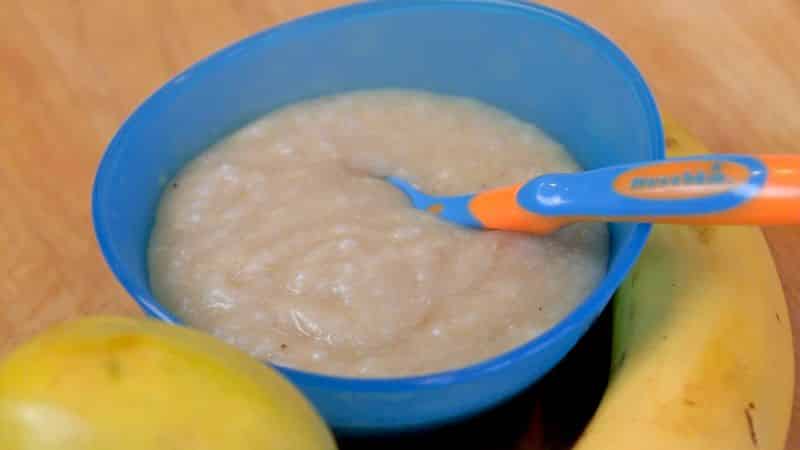
Ingredients:
- wild rice – 200 g (1 cup);
- pollock fillet – 300 g;
- sunflower oil – 1 tbsp. l.;
- water – 800 ml;
- ground coriander, basil, dill - to taste.
The rice is washed and soaked for 60 minutes in 400 ml of hot water. The fish is cut into medium-sized pieces and stewed in a deep frying pan with seasonings over low heat under a closed lid. The soaked rice is placed in a colander, washed again with running water, transferred to a saucepan, and filled with the remaining amount of water.
Bring the porridge to a boil and cook over low heat under a closed lid for 15 minutes until cooked. Excess water is drained. Stewed fish is mixed with rice and decorated with dill sprigs. The dish is ready!
Baked zucchini with rice and soft cheese
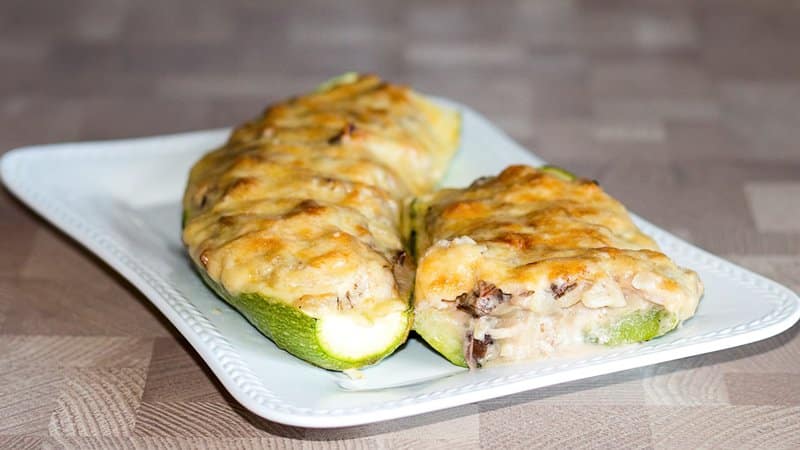
Ingredients:
- sticky rice – 200 g;
- large zucchini - 1 pc.;
- mascarpone cheese – 150 g;
- chicken egg – 1 pc.
Rice is washed several times in cold water until it becomes clear. Then pour it into a saucepan and add 800 ml of water. Bring to a boil, cover with a lid and cook for 20-30 minutes. Cool the finished porridge and mix it in a bowl with cheese and egg. The zucchini is cut lengthwise and the seeds and core are removed.Place the cheese-rice mixture into the resulting cavities and bake in the oven at 180°C for 25-30 minutes.
Curd rice pudding
Ingredients:
- round grain rice – 3 tbsp. l.;
- fresh cottage cheese – 250 g;
- sour cream – 2 tbsp. l.;
- chicken egg – 3 pcs.;
- semolina – 1 tbsp. l.;
- vanilla - to taste.
Rice is washed and boiled to obtain porridge. Place fresh, non-acidic cottage cheese in a bowl, add porridge, semolina, sour cream and egg yolks. Add vanilla if desired. Beat the ingredients with a mixer, you can use a blender.
In another bowl, beat the egg whites with a mixer until the consistency of thick foam. Gradually add whipped egg whites to the curd mixture, spoonful at a time, and mix carefully so that the foam does not fall off. Place the mixture in a pre-greased baking dish. Bake in the oven at 180°C for 30-40 minutes until golden brown.

Precautionary measures
When changing your diet, carefully monitor your condition.
Contact a gastroenterologist if you notice that after eating you experience:
- sharp or aching pain in the stomach;
- nausea;
- heartburn or burning sensation in the stomach;
- constipation or diarrhea;
- discomfort, heaviness, feeling of bloating.
After additional examination, the attending physician will prescribe medications and adjust your diet.
Read also:
Is it possible to eat boiled corn if you have gastritis?
Is it possible to eat eggplants for gastritis: arguments for and against.
Is it possible to eat dill with gastritis and how to use it in recipes.
Conclusion
Once an accurate diagnosis has been made, follow your doctor's dietary instructions. Rice for gastritis will protect and restore the gastric mucosa and alleviate the condition of patients. With low acidity, all rice varieties are allowed to be consumed.For high acidity in the stomach, rice varieties with a high gluten content and low carbohydrate levels are suitable.
To ensure that rice dishes contain enough gluten, follow the cooking tips. Carefully monitor your condition after eating rice products.